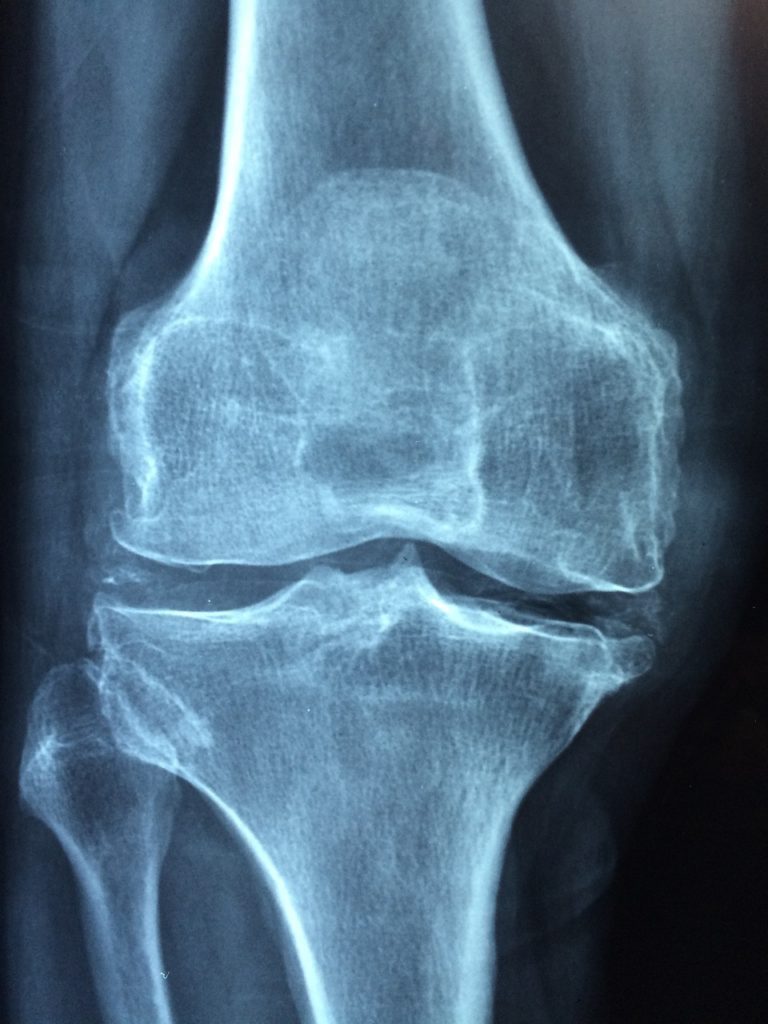Osteoarthritis causes joint pain and stiffness for many people. Understanding their differences, symptoms, causes, and treatment options can be crucial. This article will help you explore these aspects to manage both conditions effectively.
Understanding Osteoarthritis

Osteoarthritis, the most prevalent form of arthritis, is typically considered a degenerative joint disease and commonly develops in adults who are middle-aged or older but may occur at any stage of life. The primary issue with osteoarthritis involves the deterioration of joint cartilage, which leads to direct bone-to-bone contact that can result in pain and stiffness within the joints. As this wear progresses, there may be additional aggravation due to the development of bone spurs surrounding those compromised joints.
Frequently targeting weight-bearing joints such as hips, knees, hands, and spine among others. Osteoarthritis presents itself essentially as two subtypes: idiopathic or primary osteoarthritis where no specific cause is evident. Secondary osteoarthritis originates from an existing condition like a prior injury or inflammatory conditions including rheumatoid arthritis—highlighting various risk factors influencing how one might experience this common ailment.
Distinctly different from its counterpart rheumatoid arthritis—a systemic autoimmune disorder initiating inflammation and subsequent damage throughout multiple joint linings—both diseases manifest through shared symptoms like pain and stiffness although stemming from dissimilar root causes affecting their progression respectively. Delineating these differences provides critical insight essential for crafting appropriate intervention strategies unique to each diagnostic entity.
Causes of Osteoarthritis
Osteoarthritis and its related conditions stem from a complex interplay of genetic factors, environmental influences, and personal habits. The development of primary osteoarthritis is not linked to any preceding injury or condition but rather associated with the body’s aging process and gradual joint wear over time. With age comes a decline in cartilage resilience that enhances susceptibility to symptoms associated with osteoarthritis.
In contrast, secondary osteoarthritis has discernible origins such as previous injuries or existing disorders like congenital joint anomalies or inflammatory arthritis types. A history of repeated trauma caused by athletic pursuits or workplace activities can be instrumental in precipitating the onset of this form of arthritis. Over time, even minor traumas can culminate into substantial joint damage inciting discomfort characteristic of osteoarthritis.
Rheumatoid arthritis among other inflammatory ailments may set the stage for subsequent development of osteoarthritic conditions. Genetic predispositions—including hereditary variants and mutations that affect collagen production—can elevate one’s probability of encountering issues tied to developing osteoarthritis pain. Consequently, excess weight presents an augmented risk because it imposes extra strain on joints tasked with bearing body weight thus hastening deterioration within their protective cartilage lining.
Understanding these root causes plays a vital role in fostering strategies aimed at prevention while also encouraging early engagement with treatment options tailored toward managing arthritic conditions efficiently.
Symptoms of Osteoarthritis

Identifying osteoarthritis symptoms early is crucial for prompt treatment and successful management. The hallmark symptom, joint pain, typically increases following periods of rest or strenuous activity. Accompanying this pain may be stiffness, soreness, and swelling in the affected joints. As a progressive condition, osteoarthritis often starts with minor discomfort that escalates into more pronounced pain and rigidity over time.
Stiffness in the joints is especially prominent upon awakening or after sitting still for extended durations. Such stiffness can hinder the ease of movement within the joint and impede everyday activities. Bone spurs might form near afflicted joints Exacerbating discomfort.
During the motion of these compromised joints, sufferers may notice crepitus—a grating sound or feeling—which signifies deteriorated surfaces within the joint area. Compromised flexibility frequently accompanies such symptoms. It limits the normal range of motion, which complicates routine actions like stooping or grasping items.
Early recognition of these signs should prompt individuals to pursue medical consultation where they can determine appropriate treatments aimed at lessening their distress while preserving mobility in their joints.
How Osteoarthritis is Diagnosed
The process of diagnosing arthritis, including osteoarthritis and rheumatoid arthritis, starts with a detailed review of the patient’s medical history followed by a physical examination. Health professionals will take note of symptoms like joint pain and stiffness while inspecting the affected joints for indications of swelling, sensitivity, and limited range of motion. These steps are vital to pinpoint the exact type of arthritis affecting an individual as well as determining its severity.
To substantiate the diagnosis, imaging tests are employed extensively. X-rays can show whether there is a reduction in joint space or the formation of bone spurs indicative of certain conditions. MRI scans offer high-resolution images that exhibit any injury sustained by cartilage or soft tissues including ligaments and tendons within or surrounding the affected joints.
Blood tests help eliminate other causes behind joint pain such as infections or systemic inflammatory diseases like rheumatoid arthritis from consideration. Cutting-edge diagnostic methods like digital motion X-rays alongside DynaROMTM motion testing aid in analyzing how well-affected joints function so that clinicians can design targeted treatment strategies accurately tailored to each patient’s condition.
Treatment Options for Osteoarthritis

Addressing the symptoms of osteoarthritis requires an integrated strategy that focuses on diminishing joint pain, bolstering joint functionality, and elevating overall well-being. Standard treatment methods encompass a mix of medication use, engaging in physical therapy sessions, and at times surgical procedures. The key objectives are centered around reducing pain and stiffness in the joints, enhancing movement within these joints, as well as averting additional damage to them.
Though reversing osteoarthritis is not currently possible, various therapeutic approaches can profoundly ease discomfort while also promoting a greater range of motion. Crafting a tailored care plan which usually includes multiple treatments is crucial for effective symptom management related to osteoarthritis.
Seeking advice from medical experts offers guidance toward selecting optimal treatment alternatives designed to meet specific individual requirements and health circumstances.
Medications
Drugs are essential in alleviating symptoms of osteoarthritis, particularly when it comes to pain and swelling. Nonsteroidal anti-inflammatory drugs (NSAIDs), such as ibuprofen and diclofenac, are routinely used to alleviate discomfort and diminish inflammation. For targeted areas like knees and hands, topical NSAIDs in the form of gels or creams can be exceptionally beneficial for localized pain relief while also being associated with fewer side effects than their oral counterparts.
In cases where the pain is more intense, injections containing corticosteroids may be given for substantial relief of discomfort. Some individuals turn to dietary supplements including glucosamine and chondroitin to enhance joint health. Effectiveness is variable among different users.
To ensure a safe regimen that effectively treats their condition without adverse consequences or drug interactions, patients should engage in thorough discussions about all therapeutic alternatives with their healthcare provider.
Physical Therapy and Exercise
Engaging in physical therapy and maintaining a routine of regular exercise is pivotal for the management of osteoarthritis. Participating in activities that are gentle on the joints, like swimming, walking, or biking, can enhance stamina while simultaneously strengthening muscles surrounding your joints to alleviate pain and diminish stiffness. A customized regimen created by a physical therapist may incorporate flexibility exercises along with muscle-strengthening techniques aimed at bolstering joint support and increasing range of motion.
It’s important to begin any new exercise activity with caution, incrementally intensifying workouts to prevent causing fresh joint pain or potential injury. Keeping track of advancements such as an improved ability to carry out everyday tasks with reduced discomfort can serve as encouragement throughout this process.
Beyond augmenting one’s level of fitness physically, involvement in physical therapy also promotes broader aspects of health by lowering stress levels and improving emotional states—an invaluable benefit for holistic well-being.
Surgical Interventions
For those suffering from severe osteoarthritis who have not found relief through alternative treatments, surgical intervention might be the next necessary step. Joint replacement surgery—including operations on the hip joint or knee—is a prevalent method where artificial materials like metal and plastic are used to replace worn-out joint areas. This procedure can greatly diminish discomfort and enhance functionality, enabling individuals to get back to their routine activities with better ease of movement.
Additional surgeries include procedures such as knee osteotomy that focus on adjusting the alignment of the knee to alleviate pain. Patients contemplating surgery must weigh their expectations against possible complications and understand what recovery entails. Discussing options with a healthcare professional is vital when considering how best to address issues related particularly to knee osteoarthritis so that they may proceed confidently towards achieving optimal results post-surgery.
Lifestyle Changes to Manage Osteoarthritis

Lifestyle changes are crucial in managing osteoarthritis and arthritis effectively. Here are some key strategies:
- Weight management: Excess weight adds stress to weight-bearing joints, exacerbating pain and accelerating disease progression, which can lead to developing osteoarthritis.
- Healthy diet: Adopting a healthy, balanced diet can help achieve and maintain a healthy weight.
- Physical activity: Gradually increasing physical activity not only reduces joint strain but also improves overall health and energy levels.
By implementing these changes, you can better manage your condition and enhance your quality of life.
Regular physical activity is essential for building muscle strength around the joints, which provides better support and reduces pain. Low-impact exercises like swimming and cycling are highly beneficial. Additionally, activities that promote flexibility and balance, such as Tai Chi and Yoga, can enhance joint function and overall well-being.
Incorporating relaxation techniques, such as deep breathing exercises and meditation, can help manage pain and improve mood. Good posture and ergonomic adaptations at home and work can also reduce joint strain and prevent further joint damage. These lifestyle changes can significantly improve quality of life and help manage osteoarthritis symptoms more effectively.
Alternative Therapies
There are supplementary treatments available for those seeking to control osteoarthritis pain and improve their joint movement. Acupuncture has been known to lessen discomfort by targeting precise body points, whereas chiropractic treatment can aid in enhancing joint mobility and easing muscle stiffness related to osteoarthritis.
Employing heat or cold therapy offers a straightforward approach that is quite beneficial in addressing symptoms of osteoarthritis. Heat application increases circulation and loosens muscles while applying cold helps dull the sensation of pain and diminishes swelling when experiencing exacerbations. Combining these alternative therapies with standard medical care may improve overall comfort levels and health outcomes.
How Physicians Group, LLC Can Help
Physicians Group, LLC is dedicated to offering an extensive array of services designed for the treatment and management of osteoarthritis. They have a presence in several cities across Florida and Minnesota, such as Auburndale, Bradenton, and Minneapolis, which makes it easy for numerous patients to utilize their offerings. The clinic specializes in providing chiropractic care, imaging services, and a variety of joint pain treatments that together form a comprehensive multidisciplinary strategy to tackle osteoarthritis.
For those seeking care from Physicians Group, LLC., scheduling appointments is made effortless either through online booking or by calling the closest facility directly. This patient-centric organization focuses on crafting individualized treatment regimens that lean towards non-surgical methods intertwined with integrated health approaches aimed at delivering enhanced outcomes for patients while elevating their overall well-being.
Living with Osteoarthritis
Living with osteoarthritis can be challenging, but with the right strategies and support, it is possible to manage daily activities effectively. Early consultation with an occupational therapist can be highly beneficial. These professionals can help create tailored plans to address the challenges of daily living, making it easier to perform tasks with less pain and strain.
Assistive devices, such as custom splints and supports, can alleviate stress on painful joints and improve functionality. Using a walking stick can reduce pressure on knees or hips, enhancing mobility.
Breaking tasks into manageable steps and taking regular rest breaks can help reduce discomfort and make daily activities more achievable. By adopting these strategies, individuals can improve their quality of life and maintain their independence.
Frequently Asked Questions
What are the primary causes of osteoarthritis?
Natural aging and joint degeneration are the principal factors leading to osteoarthritis. In contrast, secondary osteoarthritis commonly arises due to previous injuries to joints or as a consequence of inflammatory diseases like rheumatoid arthritis.
Recognizing these underlying causes is essential for the successful prevention and control of this condition.
What are the most common symptoms of osteoarthritis?
Joint pain, stiffness, tenderness, and swelling are typical symptoms of osteoarthritis that often exacerbate following periods of rest or after engaging in physical activity.
Early detection of these common symptoms is crucial for effective management of the condition.
How is osteoarthritis diagnosed?
The diagnosis of osteoarthritis involves an assessment of your medical history, a thorough physical examination, and the employment of imaging technologies such as X-rays or MRIs. Blood tests are also performed to rule out other potential conditions.
Such a multifaceted strategy is crucial for confirming an accurate diagnosis and devising a suitable treatment regimen.
What are the main treatment options for osteoarthritis?
Primary approaches to managing osteoarthritis encompass the use of nonsteroidal anti-inflammatory drugs (NSAIDs) and corticosteroid injections to alleviate pain, alongside physical therapy and exercise regimes crafted to enhance joint function. Weight control is recommended as a means to diminish pressure on affected joints. In instances where the condition is advanced, surgical interventions such as joint replacement may be considered.
These treatment strategies must be customized based on each person’s specific requirements to achieve the best possible outcomes.
How can lifestyle changes help manage osteoarthritis?
By sustaining a healthy weight, engaging in regular physical activity, and adhering to a nutritious diet, you can significantly mitigate symptoms of osteoarthritis and enhance your general well-being.
Such modifications foster the health of your joints and provide efficient management of the pain associated with the condition.




